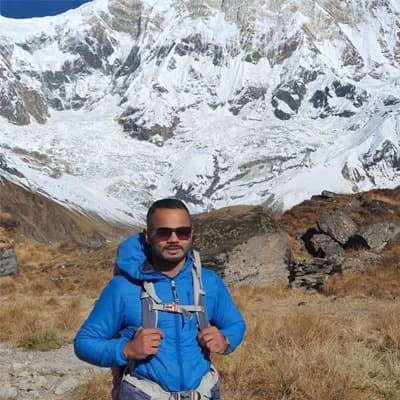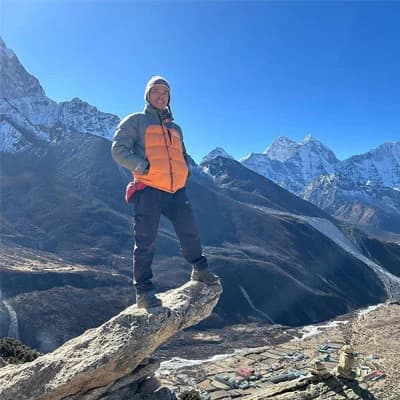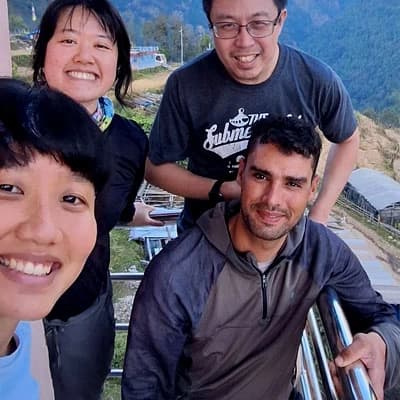The Luxury Everest Base Camp Trek offers a once-in-a-lifetime journey with gorgeous views and ultimate comfort. Unlike the standard trek, you’ll enjoy helicopter rides to and from Kathmandu, ensuring a smooth and scenic experience. You'll also stay in high-end lodges with cozy rooms and warm hospitality, making your adventure both exciting and relaxing. Along the way, you'll witness three towering eight-thousanders - Mt. Lhotse (8,516 m), Cho Oyu (8,188 m), and Mt. Makalu (8,485 m). This trek blends the thrill of Everest with unmatched luxury, offering a truly special Himalayan experience.
Everest Base Camp Luxury Trek
Highlights
- Enjoy luxurious accommodations in 5-star hotels and comfortable lodges with hot showers, electric blankets, and delicious meals.
- Take a scenic helicopter flight from Kathmandu to Lukla, avoiding bumpy plane rides and lengthy road travel.
- Adjust to the altitude comfortably with extra acclimatization days in Namche Bazaar and Dingboche.
- Witness breathtaking views of the Himalayas, including Mount Everest, Ama Dablam, and more.
- Our itinerary avoids the challenging trek from Namche to Tengboche, making the journey more comfortable.
- Knowledgeable and friendly guides ensure a safe and enjoyable trek while providing valuable support and insights.
- Conclude the trek with a helicopter ride from Gorakshep to Kathmandu, offering stunning aerial views.
Overview
The Luxury Everest Base Camp Trek offers a unique adventure to the world’s highest mountain, Mount Everest, with added comfort and luxury every step of the way. Instead of roughing it in basic teahouses, you’ll stay in upgraded, cozy lodges that offer heated rooms, private bathrooms, and the comfort of higher-quality bedding, making the trek much more pleasant.
Unlike the standard Everest trek, where you stay in regular hotels, this luxurious journey begins and ends with stays in five-star hotels in Kathmandu, where you can relax and enjoy world-class services. You’ll also experience gourmet meals, with fresh and delicious options that keep you energized, including both Nepali delicacies and international dishes.
The trek itself offers more comfort, with expert guides and porters to make sure everything runs smoothly. The focus is on your well-being, and with fewer trekkers, you’ll receive personalized service. Plus, after reaching Everest Base Camp, you’ll experience a helicopter return to Kathmandu, saving you time and offering breathtaking aerial views of the Himalayas.
On the Luxury Everest Base Camp Trek, you’ll also enjoy the highest-quality trekking gear, ensuring comfort no matter the weather. The team of guides and support staff is highly trained to ensure your trek is as safe, enjoyable, and stress-free as possible.
This trek is for those who want to experience Everest in style, combining the adventure of the Himalayas with the comfort of luxury, ensuring an unforgettable journey that goes beyond the standard trek.
Everest Base Camp Luxury Trek Itinerary
After landing at Tribhuvan International Airport, you’ll first head to immigration to sort out your on-arrival visa, if needed. Once you’ve completed the process and collected your luggage, you’ll see a representative from Himalayan Massif Trek holding a placard with your name. They’ll warmly welcome you and ensure you’re comfortably escorted to your hotel.
You’ll then check into a luxurious five-star hotel in Kathmandu, where you can relax. In the evening, you’ll enjoy a delicious welcome dinner hosted by Himalayan Massif Trek. It’s a wonderful way to settle in and prepare for your upcoming Everest Base Camp Luxury Trek.
This morning, we’ll take an amazing helicopter ride from Kathmandu to Lukla. During the 30-minute flight, you’ll see beautiful views of bustling cities, green hills, and towering mountains. We’ll land at Lukla Airport, one of the highest in the world at 2,860 meters.
Once you step into the cool mountain air, the adventure begins. From Lukla, we’ll trek for 5-6 hours to the peaceful village of Monjo, at 2,835 meters. Along the way, you’ll enjoy scenic trails and quiet surroundings. Tonight, you’ll stay at one of the best places in Monjo to relax and get ready for tomorrow’s journey.
After a hearty breakfast in Monjo, we’ll begin our trek to Namche Bazaar. The journey takes around 5-6 hours, covering 7-8 kilometers with a steady climb. Before entering Sagarmatha National Park, you’ll need to submit your trekking permits at Monjo. The trail then winds along the rushing Dudh Koshi River, crossing suspension bridges adorned with colorful prayer flags, creating a truly magical atmosphere.
Namche Bazaar, at 3,440 meters, is the vibrant heart of the Everest region and the last major commercial hub along the trek. Once we arrive, you can rest and acclimate or explore the bustling town, known for its lively shops and cafes. Tonight, we’ll settle into a comfortable lodge in Namche Bazaar, where you can relax and recharge for the days ahead.
Namche Bazaar serves as a perfect spot for acclimatization, allowing your body to adjust to the altitude of 3,440 meters. This is important as the rapid ascent from Kathmandu could lead to fatigue or altitude sickness. You can hike to nearby villages like Khunde and Khumjung to explore local culture and take in the beautiful scenery. For those seeking more adventure, a hike to the famous Everest View Hotel offers glorious views of the Everest region.
While in Khumjung, you can visit a monastery said to house the alleged skull of a Yeti, as well as an art gallery portraying this mysterious creature. If you’re feeling energetic, you can hike to Hillary View Point for even more stunning sights. You can also stop by Khumjung Secondary School, established by Sir Edmund Hillary. After this rewarding day, we’ll return to Namche Bazaar to relax and enjoy dinner at our lodge.
Today, we leave Namche Bazaar and follow the classic Everest Base Camp trail, where the views continue to impress. After a couple of hours, we’ll take a quieter path that leads to the small village of Tashinga. This peaceful village has a few old stone houses and some cozy teahouses, offering a calm atmosphere away from the busy trails.
The trek from Namche to Tashinga takes about 3-4 hours and is fairly easy, with a short uphill climb followed by mostly flat trails. Toward the end, we’ll descend slightly to reach our resting spot for the night. Along the way, you’ll enjoy the beautiful mountain scenery, with Mt. Amadablam standing out in all its glory. Tashinga is a great place to relax and get ready for the next part of the journey.
After breakfast in Tashinga, we’ll begin our 6-7 hour trek to Deboche, with a stop at the famous Tengboche Monastery along the way. The trail takes us through beautiful landscapes, and as we reach the monastery, you’ll get to experience its rich history and culture. Tengboche Monastery is the largest in the Khumbu region, rebuilt after an earthquake and fire, and it welcomes thousands of visitors each year.
After exploring the monastery and soaking in the surrounding mountain views, we’ll continue the journey with a short 30-minute descent to Deboche. This peaceful village offers a relaxing place to rest and prepare for the adventures ahead. The combination of natural beauty and cultural heritage makes today’s trek a truly rewarding experience.
On Day 7, we’ll trek to Dingboche, reaching this beautiful village by evening. As we walk, you’ll enjoy stunning views of Mt. Nuptse and Lhotse, while Everest stays hidden behind the ridges. The views of Island Peak and Ama Dablam are also incredible, adding to the beauty of the day.
As we get closer to Dingboche, you’ll notice the trail becoming less wooded, with the terrain getting more open. The higher altitude will make each step a bit more challenging, but we’ll take it slow. We’ll spend two nights in Dingboche to help your body adjust and make sure you stay comfortable for the rest of the trek.
Today is another acclimatization day in Dingboche. We'll take a hike to help your body adjust to the higher altitude. This is important as we prepare for the next stages of the trek to Everest Base Camp. Just like we did in Namche, we’ll walk through beautiful surroundings while letting our bodies get used to the thinner air.
We'll reach altitudes above 5,000 meters for the first time today as we hike to Nangkartshang Peak, which stands at 5,083 meters. The hike takes about five hours and offers stunning views of Mount Everest, Lhotse, Tawache, Pumori, Island Peak, and other prominent mountains. You can also visit Chhukung for fantastic views of Mount Makalu. After the hike, we’ll return to Dingboche for the night.
Today, we’ll trek from Dingboche to Lobuche, beginning with a gentle climb to Thukla. The views along the way are stunning, with sights of Taboche and Cholatse that will leave you in awe.
As we approach Lobuche, you’ll feel the excitement of being in a high-altitude landscape, with incredible views of the Khumbu Icefall and surrounding peaks. In the evening, take a moment to reflect on the day’s journey as the towering mountains of Nuptse, Lobuche, and Pumori surround the village.
Along the trail, we’ll also stop at a memorial to remember the climbers who lost their lives while trying to reach Everest.
Today is the big day. We’ll head to Everest Base Camp, the final destination of our trek. First, we’ll trek through rocky trails to reach Gorak Shep, which will take about four hours. After a rest and lunch at Gorak Shep, we’ll continue our journey toward Everest Base Camp. As we approach, the excitement builds, especially as we walk across the Khumbu Glacier and frozen lakebed - it's a truly unique experience.
The hike to Everest Base Camp includes a bit of a climb and descent, but don’t worry - if you find it too tiring, you can take a horse ride for comfort. While the Base Camp itself doesn’t offer the best views of Everest, you’ll get a chance to see it up close from Kala Patthar tomorrow morning. After taking plenty of pictures at the Base Camp, we’ll head back to our lodge for a delightful dinner to end the day.
Today, we’ll hike to Kala Patthar, a famous viewpoint in the Everest region. The hike to the top takes about 1.5 to 2 hours, and when you reach the top, you’ll be rewarded with stunning views of Mt. Everest, along with other incredible mountains like Mt. Nuptse, Lhotse, and Changtse.
After taking in the views and snapping some photos, we’ll head back to our guest house for breakfast. Then, we’ll board a helicopter for a scenic flight back to Kathmandu, ending our incredible journey.
Today, you’ll have time to relax and recover after your exciting trek. You can enjoy a soothing spa and massage to feel refreshed. In the evening, we’ll gather for a farewell party to celebrate our journey together.
If your flight arrives on time, you can explore Kathmandu’s famous landmarks, like Swayambhunath, Boudhanath, Pashupatinath, and the beautiful Durbar squares. This is also a great day to shop for souvenirs and enjoy the local sights. We’ll finish the day with a farewell dinner to say goodbye and wrap up your unforgettable adventure.
Today, we’ll gather for a brief farewell to celebrate the journey we’ve shared. If you’re flying home, we’ll take you to Tribhuvan International Airport to catch your flight. This concludes your amazing Everest Base Camp Luxury Trek, and you’ll leave with wonderful memories and stories to share.
If you’d like to explore more of Nepal, we’re happy to offer recommendations for more adventures. You can always count on Himalayan Massif Trek for your next mountain journey.
Everest Base Camp Luxury Trek Route Map
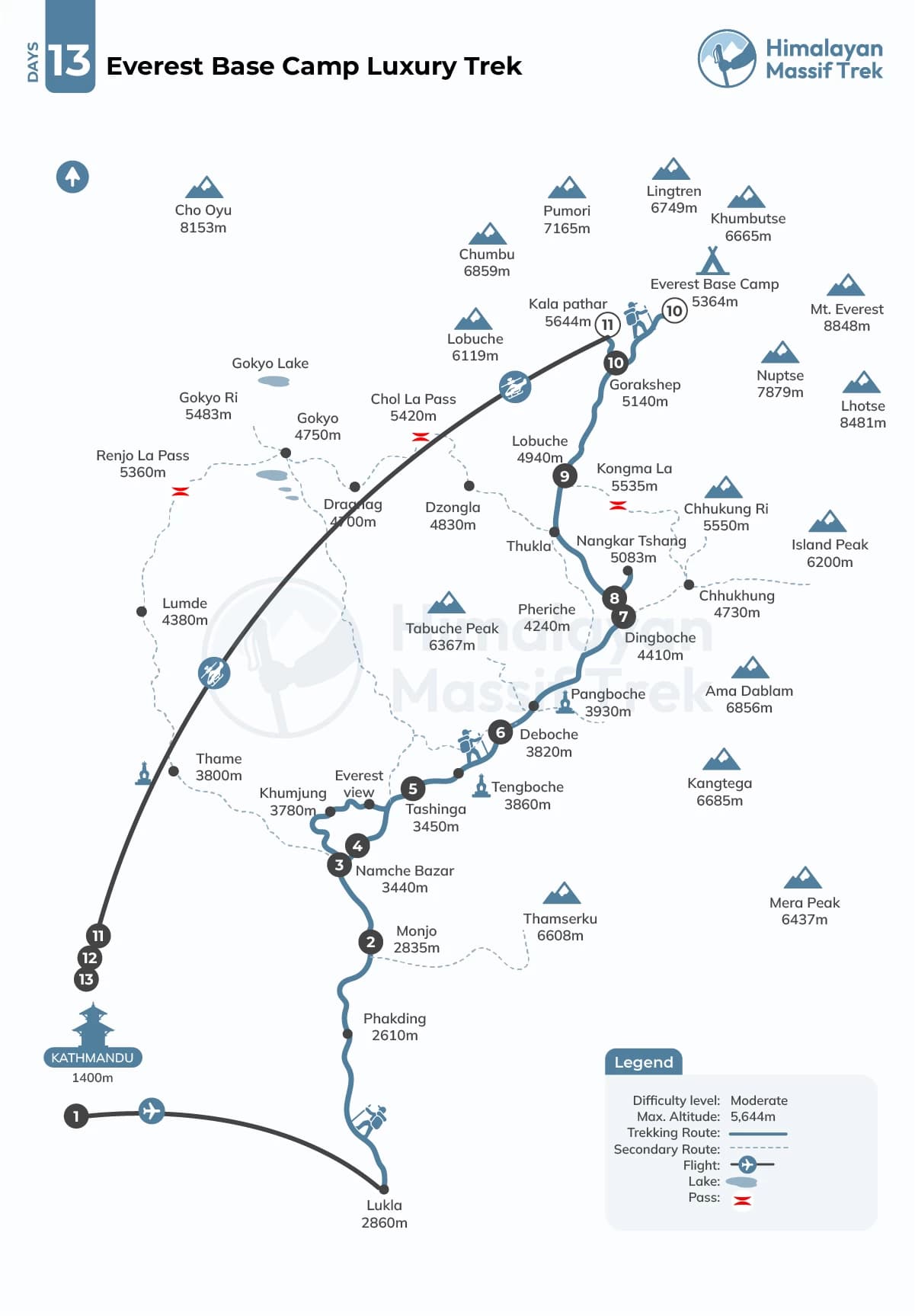

Cost Details
Accommodation:
- 3 Nights Hotel in Kathmandu ( 5-star hotel, the Marriott with BB plan)
- 2 nights Everest Panorama Lodge in Namche
- 1 night Yeti mountain home in Manjo
- 1 night Everest summit lodge in Tasinga
- 1 night Rivendell Lodge in Debuche
- The best available Mountain lodge in Dingboche (attached bathroom), Lobuche, and Gorekshep
Meals:
- 3 Standard meals a day ( Set of breakfast, Lunch and dinner)
- Farewell dinner in Kathmandu on the last night
Transportation and flights:
- International and Domestic airport pick up and drop
- Helicopter Flight to Lukla from Kathmandu
- Helicopter return flight from Gorakshep to Kathmandu
Guide and porters:
- A highly experienced guide and an assistant guide if the group size is bigger than 6 people.
- A strong porter between two trekkers (he carries up to 20kg of baggage)
Permit and document:-
- Local government fees
- National park entry permit
Trekking gears:
- Sleeping bag and down jacket to use for the trek
- HMT T-shirt and duffel bag for free
- First aid kit
Miscellaneous:
- Salary, food and accommodation for guide and porters
- Government taxes and liabilities
- International airfare
- Travel Insurance and Nepal visa fee
- Lunch and dinner in Kathmandu
- Personal expenses include phone bills, cold and alcoholic drinks, laundry bills.
- Personnel trekking gear
- Tipping for trekking guide and porters
To confirm your payment, a deposit payment is required, which is 30% of the total booking price. This deposit helps us secure permits, logistics, and other necessary arrangements for your trek.
We understand that plans can change, and we strive to be as flexible as possible. However, to cover operational costs, a cancellation fee applies. This is a percentage of your total booking price and is deducted from the deposit payment.
Cancellation Fees
Cancel 30% days before departure: 5% of the trip cost
Cancel between 10 to 30 days before departure: 10% of the trip cost
Cancel within 10 days of departure: 20% of the trip cost
If you need to cancel, please notify us as early as possible to reduce charges.
Rescheduling
Unexpected circumstances can disrupt travel plans, even if you still want to do the trip. To support our clients, we have generously waived all rescheduling fees. You can postpone and reschedule your trip at no additional cost, as long as the new departure date falls within one year of your original booking.
Upgrades
If you wish to upgrade your accommodation, transportation, or any other services not mentioned in the Trip Includes section, please be aware that these upgrades will incur additional costs. We can assist in arranging these options for you based on your preferences and availability.
Helicopter Flights
Helicopter Return: If you need helicopter evacuation or other means of transport due to altitude sickness or any other condition, your helicopter return flight ticket fare is non-refundable.
Medical Evacuation: Please note that conditional medical evacuation by helicopter is not a part of your return flight. Should you require a medical evacuation, an extra fee for heli transportation will apply. This is covered by the client themselves or their travel insurance provider.
Dates & Availability
Private TripIf you don't find an appropriate date, you can propose a Preferred Departure Date, and we’ll ensure the trip runs as scheduled just for you.
Trip Gallery
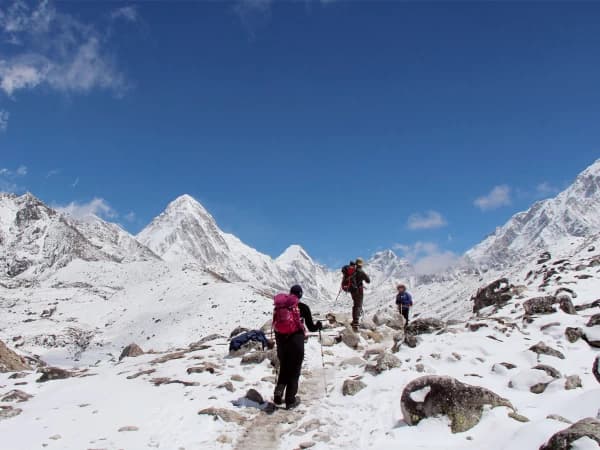
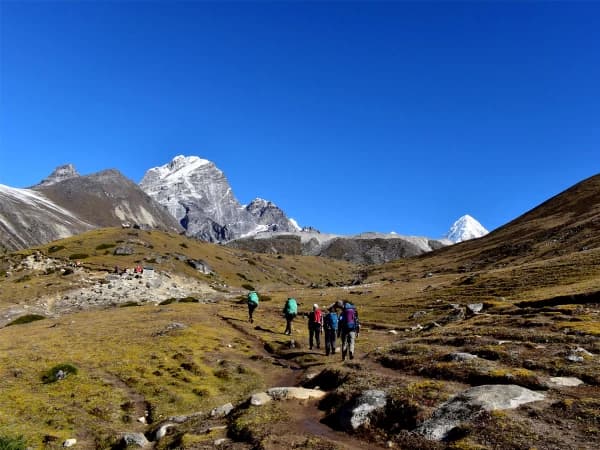
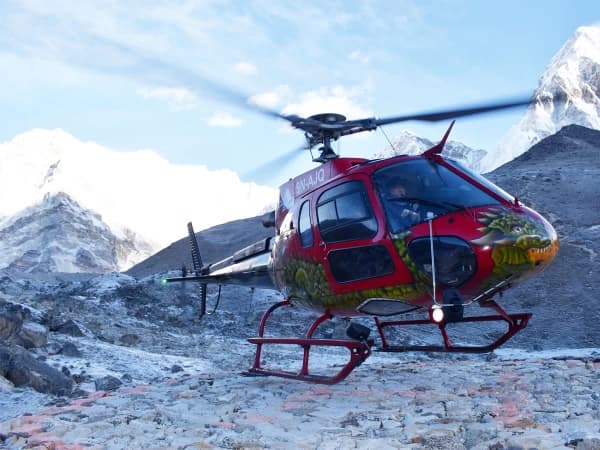
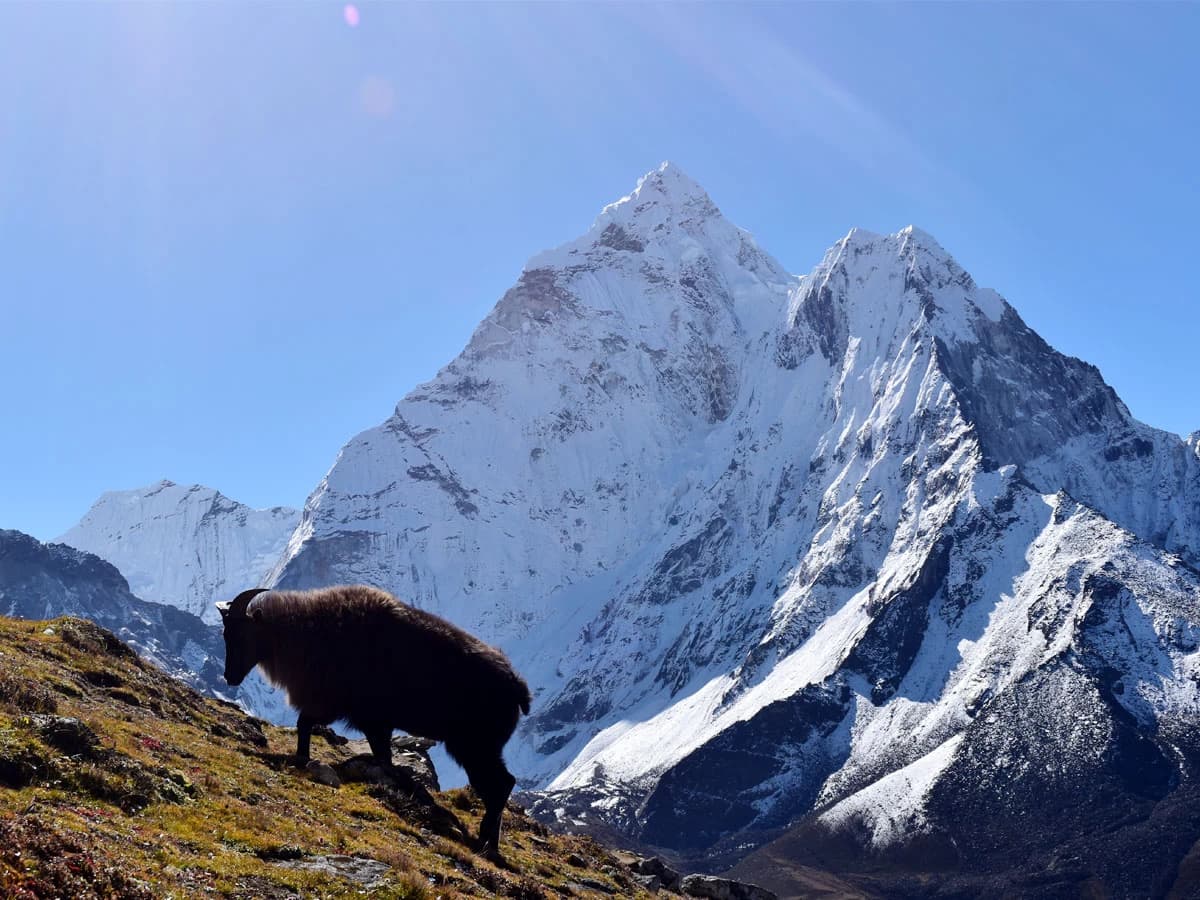
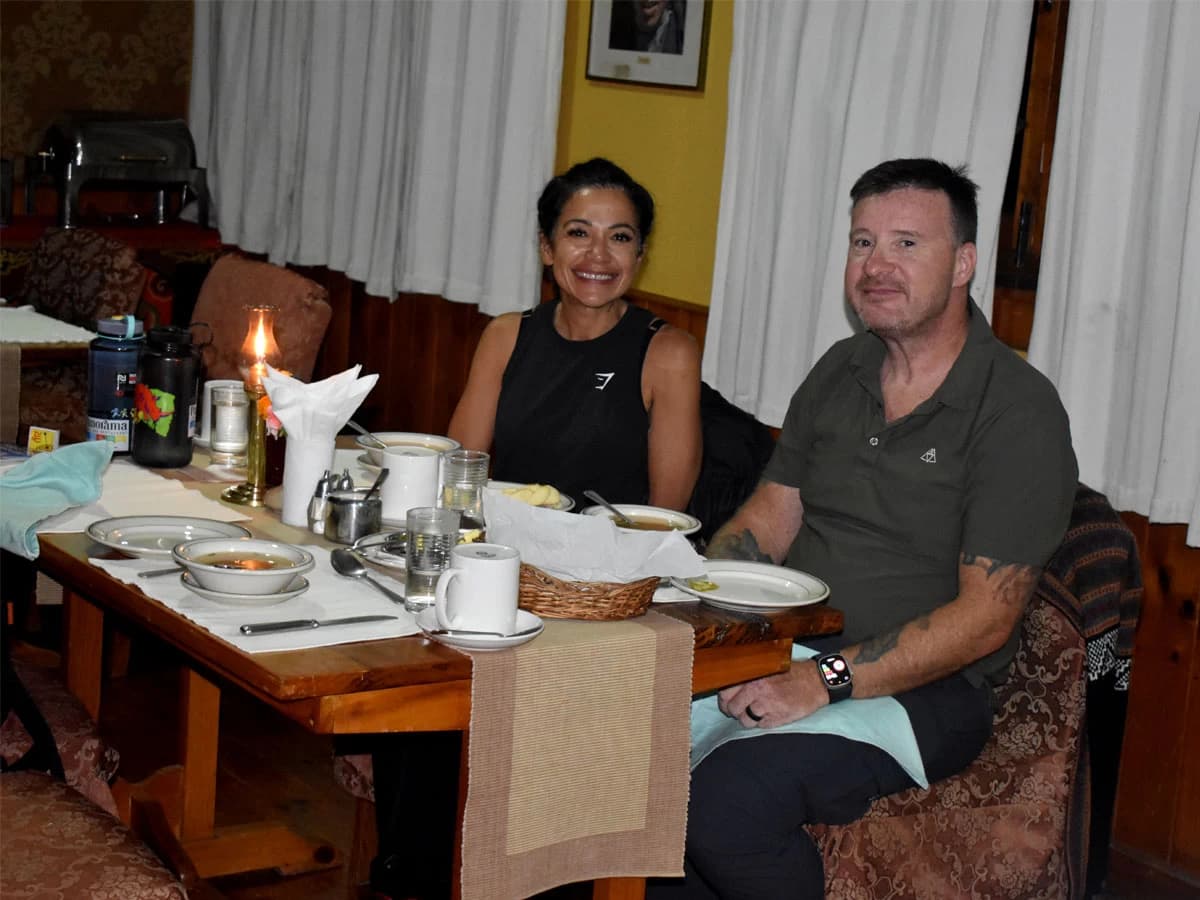

Essential Information
Documents and Visa Procedure for Everest Luxury Trek
To visit Nepal, you need a valid passport and a visa. You’ll also need permits for the Luxury Everest Base Camp Trek, but don’t worry - Himalayan Massif Trek will take care of those for you.
Most travelers can get a visa on arrival at Tribhuvan International Airport. If you want to avoid waiting in line, you can apply for a visa in advance at a Nepalese Embassy in your country. Your passport must be valid for at least six months, and it's a good idea to bring a passport-sized photo for the application.
Visa Fees:
- 15 days – $40
- 30 days – $50
- 90 days – $125
Additionally, travelers from India don’t need a visa, and some South Asian nationals get one free visit per year. Since visa rules may change, especially due to COVID-19, please check with us for the latest updates.
To see if you qualify for a visa fee waiver, visit the Government of Nepal, Department of Immigration website.
Travel Insurance for Everest Trek with Luxury Accommodation
Travel insurance is crucial for anyone trekking in the mountains of Nepal. While we don’t sell insurance, we’re happy to recommend trusted providers to help you find the right coverage.
When buying a policy, make sure it includes emergency helicopter evacuation, medical treatment, evacuation, repatriation, trekking, and climbing. Since the Everest Base Camp Trek reaches high altitudes, we recommend getting insurance that covers trekking up to 6,000 meters. Some policies may require a higher coverage tier for high-altitude activities.
Thankfully, travel insurance is easy to buy online, and you can quickly compare different options. Having coverage gives you peace of mind and ensures you’re protected in case of any unexpected situations during your trek.
Safety and Satisfaction
Your safety is our top priority. Nothing is more important than keeping you and our team members safe and healthy.
On this trek, you will be guided by an experienced and friendly trekking guide or Sherpa who is from the same mountain region of Nepal. Your guide will carry essential safety equipment, including a first aid kit. We also recommend bringing any personal medication you may need.
In case of an emergency, such as altitude sickness or unexpected health issues, we are always ready to arrange a rescue helicopter to bring you to a lower altitude or back to Kathmandu.
While trekking, always stay in a safe spot on the trail. You may see mules, yaks, or jokpas carrying supplies for the mountain lodges. These animals are commonly used for transportation in the Himalayas. To stay safe, especially on narrow trails, move to the mountainside and let them pass.
Comfortable Accommodation on a Luxurious Trek to Everest
Just like the classic EBC Trek, trekkers will stay in teahouses or lodges on the Luxury Everest Base Camp Trek. However, these accommodations are better compared to the classic ones. These lodges offer excellent services, including delicious meals, friendly staff, and warm rooms, ensuring you stay comfortable throughout your journey.
Additionally, the spacious dining areas in the lodges are heated while many offer beautiful mountain views for you to enjoy as you relax after a day of trekking. Himalayan Massif Trek carefully selects the best lodges at each stop to guarantee a comfortable and enjoyable stay for all our guests.
Note: In Kathmandu, trekkers will stay in five-star hotels, offering top-notch comfort before and after the trek.
Meals on Everest Luxury Trek
During your Everest Luxury Trek, you’ll enjoy a variety of delicious foods, including traditional Nepalese, Asian, and Western dishes. At every stop, you’ll find bread, sausages, butter, and hot drinks like tea and coffee. You’ll also get to taste Dal Bhat, a popular Nepalese meal, at every hotel.
With better infrastructure in the area, many hotels now offer fresh pastries, baked right on-site. You’ll also enjoy dishes made with Himalayan potatoes and tasty soups made with local spices.
Plus, we recommend trying all the meals but remember that drinking too much tea, coffee, or alcohol can make the trek harder. It’s better to eat more fresh vegetables, soups, and other healthy options.
Here’s a sample meal plan:
Breakfast: Oatmeal, Cornflakes, Porridge, Eggs, Pancakes, Toast with Jam, Butter, Cheese, Honey, Tibetan Bread or Chapati, Fruit, Hot Drinks (Tea, Coffee, Milk)
Lunch: Nepalese Dal Bhat, Soups, Tibetan Bread, Sherpa Stew, Steaks, Thukpa (Noodle Soup), Pasta, Sandwiches, Momo (Dumplings), Tenduk Noodles, Potato Dishes, Desserts
Dinner: Nepalese Dal Bhat, Soups, Tibetan Bread, Thukpa, Tenduk Noodles, Pasta, Salads, Potato Dishes, Desserts
Drinking Water on the Everest Luxury Trek with Helicopter Return
Staying hydrated is very important during the Everest Base Camp Luxury Trek, but drinking water must be handled carefully. While water is available from streams and taps, it is not always safe to drink. It should be boiled, filtered, or treated with purification tablets.
Most lodges on the Luxury Trek to Everest provide safe drinking water for a small fee, or you can bring your own purification system. Although bottled water is available, it is costly and adds to plastic waste, so we recommend carrying a reusable water bottle or camel bag.
Our team will support you by providing cold water and purification tablets during the Everest Luxury Trek with Helicopter Return. You can refill your bottles at lodges or meal stops, but mineral water costs extra. Drinking plenty of water will keep you energized and help prevent dehydration, ensuring a safe and enjoyable Everest Base Camp Premium Trek.
Best Season for Luxury Everest Base Camp Trek
The best time for the Everest Base Camp Luxury Trek is during spring (March to May) and autumn (September to November). These seasons offer clear skies, breathtaking mountain views, and comfortable temperatures. In spring, daytime temperatures at high altitudes can reach around 20°C, while nights drop to -5°C. Autumn is slightly warmer, with daytime temperatures reaching 25°C and nighttime lows of -10°C. These conditions make the Luxury Trek to Everest more enjoyable, with stable weather and beautiful landscapes.
Trekkers can also embark on the Everest Luxury Trek with Helicopter Return during summer or winter, but each comes with challenges. Summer (June to August) brings warmer temperatures, but monsoon rains can make trails slippery. Winter (December to February) offers stunning snow-covered views but extremely cold temperatures, reaching as low as -20°C at night. Whether you choose the Everest Base Camp Premium Trek in peak or off-season, proper preparation ensures a safe and memorable journey.
Everest Base Camp Luxury Trek Equipment List
FAQs
The highest point is Kala Patthar, at an elevation of 5,644 m (18,519 ft).
You will need three permits: the Sagarmatha National Park Entry Permit, the Khumbu Pasang Lhamu Rural Municipality Entry Permit, and TIMS card registration.
Yes, you’ll meet Sherpa communities along the way and have the chance to learn about their rich culture, traditions, and lifestyle.
Follow your guide’s instructions, stay hydrated, and allow enough time for acclimatization to prevent altitude sickness.
Yes. Dress modestly, especially at religious sites, and always ask for permission before taking photos of locals.
The price varies based on the trekking company and included services. Contact providers directly for exact pricing.
Absolutely. We prioritize safety by offering secure accommodations and experienced, trustworthy guides.
No, technical climbing gear is not required. Basic trekking essentials like sturdy boots, warm clothing, and a quality sleeping bag will suffice.
a. Experienced Local Guides
When you trek with Himalayan Massif Trek, you’re in the hands of expert guides who know the Everest region like the back of their hands. Our guides are locals who understand the culture, terrain, and trails better than anyone. With years of experience trekking through the Himalayas, they ensure your journey is safe, enjoyable, and truly memorable.
b. Authentic Cultural Experience
This trek is more than just a hike - it’s a chance to connect with the Sherpa way of life. You’ll visit beautiful villages like Monjo, Namche, Tashinga, and Dingboche, where you can enjoy traditional Sherpa meals and experience the warm hospitality of the locals. Along the way, you’ll learn about their customs, lifestyle, and deep-rooted traditions, making your adventure even more special.
c. Great Value for Money
We believe in offering the best experience at a fair price. Our packages include everything you need - permits, cozy accommodations, and delicious meals with no hidden costs. Plus, we offer special discounts for groups and repeat travelers, making your journey even more affordable.
d. Responsible and Sustainable Travel
We care about the environment and the communities we visit. Our treks follow eco-friendly practices to help protect the natural beauty of the Himalayas. By supporting local businesses and using sustainable travel methods, we ensure that Everest remains just as breathtaking for future generations.
- Expertise in High-Altitude Trekking Adventures
- Over 18 Years of Experience in The Himalayas
- Authorized and Reliable Trekking Partner
- Trusted by Thousands of Adventurers Worldwide

The luxury EBC trek was an incredible experience. The accommodations were comfortable, and the food was excellent. The team at Himalayan Massif Trek made sure...
The luxury EBC trek was a five-star experience from start to finish. The accommodations were top-notch, and the team was professional and attentive. The views...
This trek was the perfect blend of comfort and adventure. The luxury lodges were a welcome retreat after long days of trekking. The guides were...





